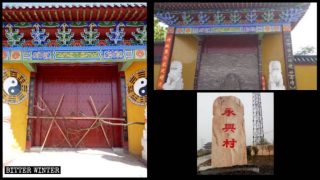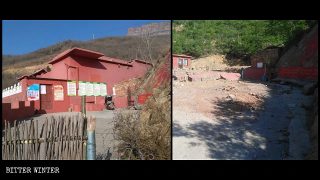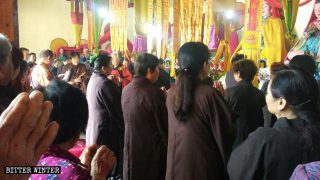Surrounding the ancient Baoguo Temple, the statues were built with the state’s approval in 2010. They now fell victim to the purge of open-air Buddhist icons.
by An Xin
Baoguo Temple in the southeastern province of Fujian was founded in 921, during the Later Liang Dynasty (907–923). The largest temple in Jianning county, under the jurisdiction of Sanming city, Baoguo Temple is closely associated with Venerable Master Ci Hang (慈航大法師, 1893—1954), a Buddhist monk who moved from China to Taiwan in 1948, where he established its first Buddhist studies institution – the Buddhist College of Taiwan.
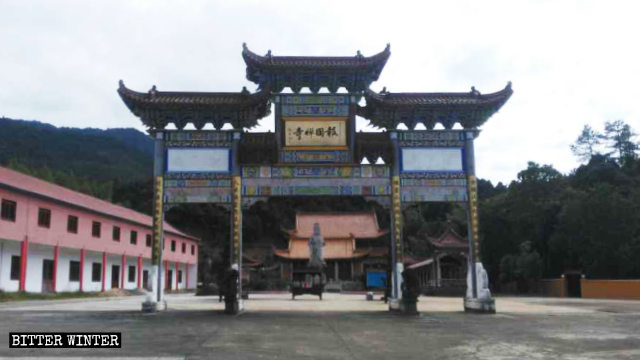
With strong support from the local government, the temple has become an important base for Buddhist cultural exchange activities and academic seminars between Fujian Province and Taiwan.
In 2010, to advance the construction of the Ci Hang cultural base, as one of the preparatory projects, 500 lifelike open-air statues of Arhats – Buddhists who have gained insight into the true nature of existence and have achieved nirvana – were placed on either side of Baoguo Temple’s Pilgrimage Avenue. On June 21, 2011, the State Administration of Religious Affairs and the provincial Ethnic and Religious Affairs Committee and municipal Ethnic and Religious Affairs Bureau hosted the ceremony for consecrating the new 500 Arhat statues.
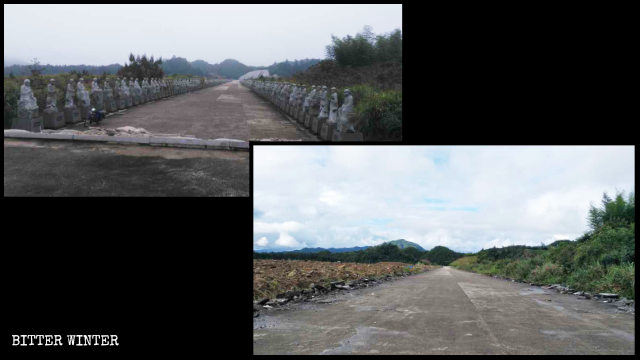
However, as the CCP’s campaign to annihilate Buddhism is sweeping across the country, this prestigious ancient temple wasn’t spared either.
According to a source, since 2018, leaders from the Ethnic and Religious Affairs Bureau of Sanming city, Jianning county committee, and the county government have made repeated visits to the temple and demanded the removal of the Arhat statues positioned on either side of the 760-meter-long Pilgrimage Avenue. The officials claimed that the sculptures occupy a fairly large area, which is a waste of land resources.
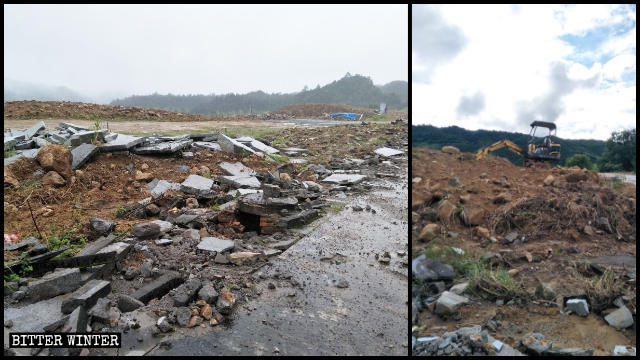
The area after the Arhat statues on either side of Pilgrimage Avenue have been dismantled. The crane, used to demolish the icons, is still parked at the scene.In May this year, the local government spent more than half a month to dismantle all the statues. Currently, most of the 500 Arhats have been placed next to the temple’s main gate, while others have been moved to the temple’s backyard. The future of the dismantled sculptures remains unknown.

“Just like that, the once-spectacular Pilgrimage Avenue has been turned into a pile of ruins,” a passing tourist said with a sense of sorrow.
A believer who came to the temple to pray for blessings said, “Now, just like during the Cultural Revolution, if you don’t obey [the government], you will be subjected to attacks on false charges. For monks and nuns, all they can do is follow their destiny.”

Meanwhile, statues of 18 Arhats at either side of Bodhi Path at Shengquan Temple (literally “Holy Spring Temple”) in Gushan town under the jurisdiction of Fuzhou city in Fujian Province, were dismantled on the grounds that they were “too high.”
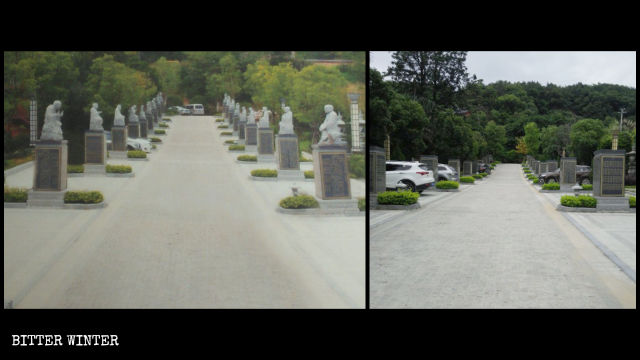
Shengquan Temple was built in the first year (707 AD) of the Jinglong Era during the Tang dynasty (618–907) and has a history spanning over 1,300 years. The temple was included in the third batch of protected historical and cultural sites in Fuzhou’s Jin’an district.
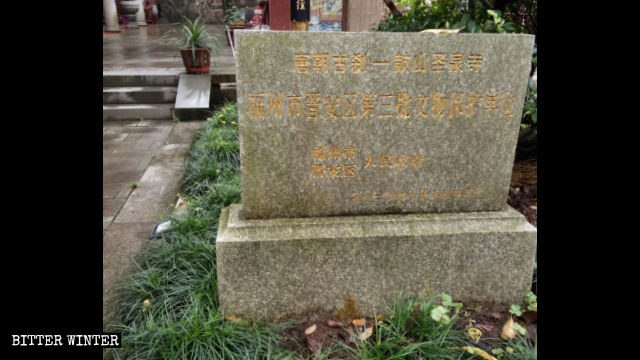
According to an informed source, “The Arhat statues were only two to three meters tall. Saying that they were ‘too high’ is really absurd. It’s not an issue of height at all. Now, the government wants to suppress religion. Whatever they say, then that’s what it is. If they tell you to demolish something, then it must be demolished. They don’t do things according to the rules at all, nor can they be reasoned with.”

Today, the Arhat statues which were built three years ago at the cost of more than 1,000,000 RMB (about $ 145,000) have been stacked in a pile to the side of the road and covered with a cloth, making for an extremely miserable sight.
source:BITTER WINTER/An Xin
